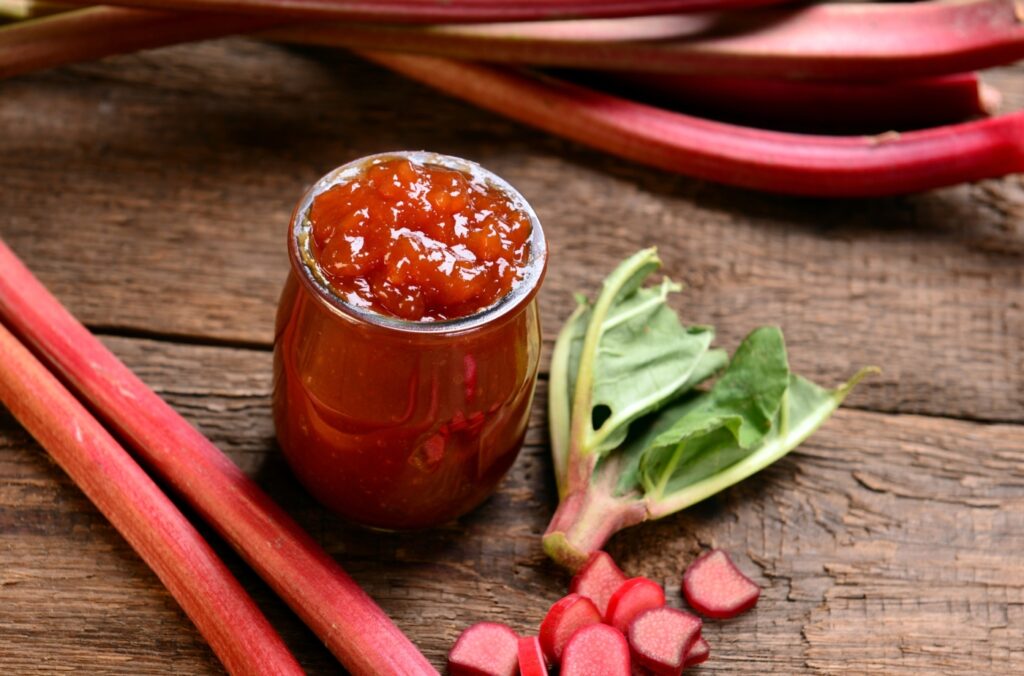
Q: Is it possible to grow rhubarb in Southern California?
A: Most of the rhubarb that is grown commercially in the United States comes from Washington, Oregon, and Michigan – states with considerably more rainfall and cooler temperatures than Southern California. It is possible to grow it in certain parts of California, but it probably won’t thrive like it does in colder, wetter places.
Rhubarb is considered a hardy cool season perennial that is relatively frost resistant. It is usually propagated via crowns planted only 3-6 inches deep in early spring. Seed is also available, but your results may vary. It prefers fertile, well-drained, slightly acid (pH 6-7) soil.
When daytime temperatures fall below 40 degrees, you should see bud break. It’s happiest and most productive when the daytime temperatures are around 70 and nighttime temperatures reach 50. The plant should remain productive if the temperature stays below 90. This can be a problem for hotter areas.
Related links
What to know before canning fruit and vegetables from your garden
How to use and preserve different types of tomatoes from the garden
Why this nutritious garden vegetable is a perennial ornamental wonder
If you feel lucky, try planting it on the north or east side of your property in a sheltered spot. Keep in mind that this plant can get quite large. Ours was over 6 feet across. Cooler temperatures result in redder stalks, so don’t be surprised if your rhubarb is not as pretty as the catalog photos. If your climate is especially hot, you may only be able to grow it as an annual ornamental.
If you are interested mostly in rhubarb’s ornamental qualities, Swiss chard varieties such as “Rhubarb” or “Bright Lights” are better suited for hot areas, and are similar in appearance to rhubarb.
You can begin harvesting stalks when the plant is two years old. First year plants will still be kind of puny, and they should be given a year to get settled. (This is why I don’t recommend growing it in hot areas – you’ll never get to harvest decent-sized stalks.)
To harvest, snap the stalk near the base of the plant, then remove all of the leaf. I like to use a big chef’s knife to thwack off the leaf right into the compost bin. Rhubarb leaves contain oxalic acid, which is quite toxic. Do not harvest stalks that have been frost damaged since the oxalic acid will migrate from the leaves into the stalks. Once the plant has wilted from the heat, the stalks will become floppy, icky, and unsuitable for harvest. Never remove more than a third of the plant, unless you want to kill it.
Rhubarb can be frozen safely for later use. Blanching in boiling water will help preserve the color and texture but is not entirely necessary. It can also be canned or made into jam or jelly. Always use a tested recipe when canning. These can be found on any cooperative extension or university website. Companies that make products for canning, such as Ball or Kerr, are also good sources for reliable, safe recipes.
Have questions? Email gardening@scng.com.
Looking for more gardening tips? Here’s how to contact the Master Gardener program in your area.
Los Angeles County
mglosangeleshelpline@ucdavis.edu; 626-586-1988; http://celosangeles.ucanr.edu/UC_Master_Gardener_Program/
Orange County
ucceocmghotline@ucanr.edu; 949-809-9760; http://mgorange.ucanr.edu/
Riverside County
anrmgriverside@ucanr.edu; 951-683-6491 ext. 231; https://ucanr.edu/sites/RiversideMG/
San Bernardino County
mgsanbern@ucanr.edu; 909-387-2182; http://mgsb.ucanr.edu/
Related Articles
Why this low-water fruit tree is good to grow in limited spaces
7 garden tips for growing peppers in Southern California
What to know about growing grapes and what to do when your hillside has invasive plants
3 invasive plant species you’ll want to keep out of your garden
How to protect your trees from gusty winds
